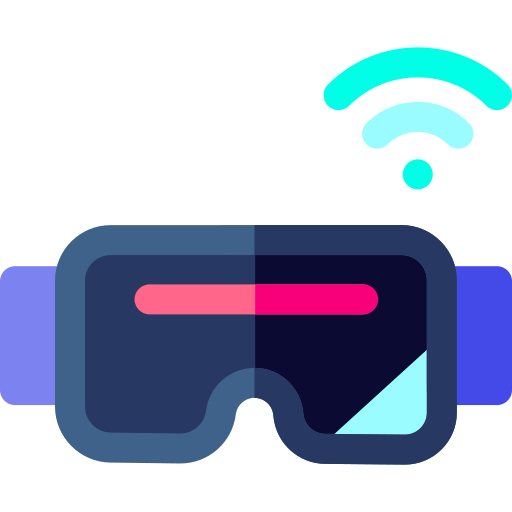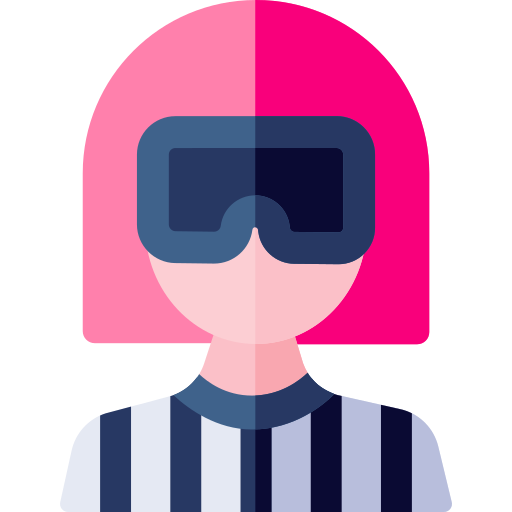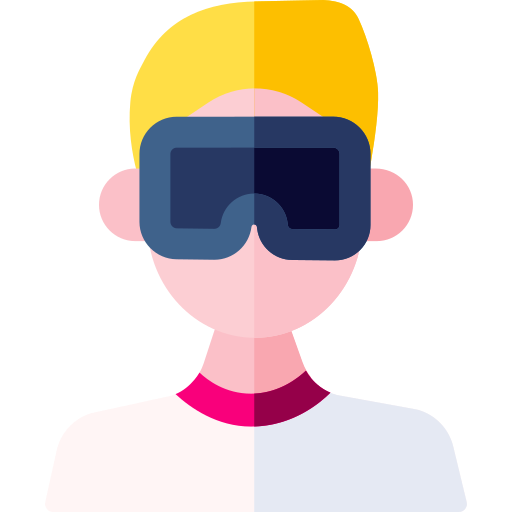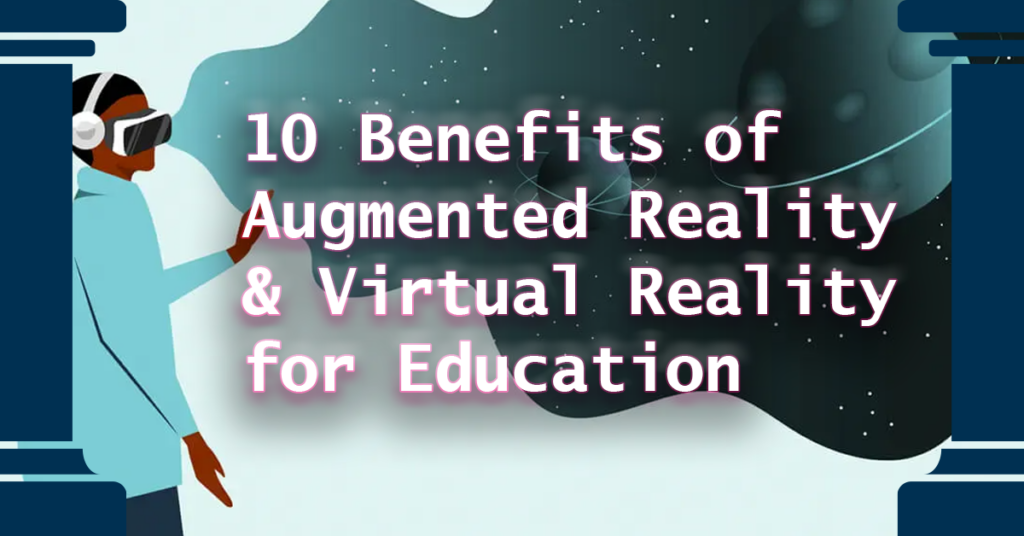10 Benefits of Augmented Reality and Virtual Reality for Teaching. Typically the public education sector tends to be the laggards when it comes to adopting new technology. However, that is not always the case for enterprising institutions or forward thinking teachers. State of the art technologies have already started to revolutionize the world of education.
The peripheral devices required to engage with AR/VR are now readily available and affordable. The software is increasingly more accessible and user friendly. So what’s stopping mass adoption? Nothing. We believe it is only a short matter of time before AR & VR capable devices will be as common as the household TV.
- Experiential Learning
- AR and VR : Educational Paradigm Shift
- Benefits of AR & VR for Teaching & Learning
- 1. Enhanced Collaboration & Teamwork
- 2. Kinesthetic & Tactile Learning
- 3. Multi-Sensory Experiences
- 4. Enhanced Student Engagement
- 5. Contextualized Learning
- 6. Gamification of Learning
- 7. Distraction-Free Learning
- 8. Breaking Boundaries to Accessibility
- 9. Improved Understanding of Concepts
- 10. Expression of Individuality

Our team has done some digging and here is a brief synopsis about AR and VR in the education industry. The following describes how institutions and teachers can harness the potential of this technology to make learning more engaging and learner centered.
Even before the COVID-19 pandemic shuttered schools, the world was already completely digitized. A range of educational technology solutions were available to instructors. Educators have always been searching for ways to make learning more interactive, increase student engagement and improve knowledge retention. However, the coronavirus has acted as an unfortunate catalyst to propel the education space further towards virtual interaction over face to face interaction. Read the 10 Benefits of Augmented Reality and Virtual Reality for Teaching.

Experiential Learning
The importance of experiential learning is well known among teachers and learners alike. We tend to better remember things that we do. As a result the answer to making education more effective is to implement a curriculum that provides new learning experiences and allows for ‘learning by doing’.

Developed in the 1960s, the “Cone of Experience” from Edgar Dale shows what we already know, that learners remember far more of what they do than what they read or hear. This research set the stage for the theories of ‘learning by doing’ and ‘experiential learning’, which helped craft student-centered curricula through the decades since.
AR and VR : Educational Paradigm Shift
AR and VR are experiential learning in a nutshell. They promote kinesthetic, or tactile learning, by providing students with motivating, engaging and comprehensively immersive learning experiences that can be easily managed within a physical or virtual classroom. Basically, they make learning interactive and fun.
Augmented Reality
Augmented Reality (AR) is one of the biggest tech trends of the moment, and it will only increase in size as smartphones with augmented reality and other devices become more accessible around the world. AR lets us see the real-life environment right in front of our eyes – trees swinging in the garden, dogs chasing balls, kids playing soccer – with a digital boost pinned to them.
AR can be a quick fix to capture the attention of learners using their phones or iPads. Teaching and learning with Augmented Reality is highly interactive and lets teachers be actively involved in the process as well. It can mean students transform 2D images to 3D interactive models using their smart devices, making a flipped classroom interaction possible. Students take ownership for their own learning.
The best part about AR is you don’t need any additional equipment. All you need is a mobile or table and 2D figures can be transformed into 3D characters through various applications.

Virtual Reality
A ground-breaking technology that has been around for the better part of 3 decades, but has only recently entered the mass consumer market, thanks to the affordable Oculus Quest 2 by Facebook. For educators, VR allows students and teachers to understand abstract topics through immersive learning. For example, take a tour inside the human brain, travel to space or visit historical sites all through immersive VR experiences.
The technology also provides distraction-free experiences which further improves concentration. Since VR requires a headset to be worn, the learner is always involved in the experience and cannot be distracted by something outside, or a game on their mobile phone.
Since students can virtually travel anywhere, they are no longer bound by the walls of the classroom. VR is clearly the way forward for distance learning and it will be only a matter of time before all schools adopt this technology as the new learning paradigm.
For support in setting up an Augmented or Virtual Learning Experience in your school, please contact us for a free consultation.
Benefits of AR & VR for Teaching & Learning
The following list has been crafted with Universal Design of Learning (UDL) principles in mind. Learner-centered facilitation of the learning environment can be challenging in face to face classrooms, but with AR/VR, the many best practices of teaching and learning that have been advocated by educational researchers for the past 50 years can now swiftly be realized with the flick of the switch. 10 Benefits of Augmented Reality and Virtual Reality for Teaching.
1. Enhanced Collaboration & Teamwork
Teachers and students are actively involved in a process together. Students are interacting with other students. AR and VR both allow for hyper-collaboration, since activities, games and explorations happen in a way to mimic real life engagement.
Teamwork and collaboration happen organically in AR/VR, minimizing the extra classroom management and facilitation work that teachers have to do.

2. Kinesthetic & Tactile Learning
AR/VR technologies all come with intelligent learning content for STEM and humanities that allows students experience things that are happening around them. Manipulating objects in 3D immersive environments means that all students have a kinesthetic and tactile learning experience – one of the most difficult and time-consuming for teachers to achieve in a traditional classroom setting.
3. Multi-Sensory Experiences
Multi-sensory experiences mean that students are not just reading and listening like in a traditional context, but they are using their vision, hearing and touch through an integrated approach rather than just activities that target one sense at a time. The multi-sensory experiences offered by AR/VR also further inspire and excite learners.
“High fidelity graphics and immersive content using head-mounted-displays (HMD) have allowed students to explore complex subjects in a way that traditional teaching methods cannot.”
Hamilton, D., McKechnie, J., Edgerton, E. et al. Immersive virtual reality as a pedagogical tool in education: a systematic literature review of quantitative learning outcomes and experimental design. J. Comput. Educ. 8, 1–32 (2021). https://doi.org/10.1007/s40692-020-00169-2
4. Enhanced Student Engagement
Student participation has always been one of the major challenges for schools and teachers. Hence, learning management systems supported by augmented reality and virtual reality help teachers by increasing student participation through interactive and immersive content.

“…using an augmented reality mobile application increased the learning motivation of students. The attention, satisfaction, and confidence factors of motivation were increased, and these results were found to be significant.”
Tasneem Khan,1 Kevin Johnston,1 and Jacques Ophoff. The Impact of an Augmented Reality Application on Learning Motivation of Students. DOI, 2019. https://doi.org/10.1155/2019/7208494
5. Contextualized Learning
One of the most important benefits of AR and VR for schools is to help students learn through contextual learning. Using these modern technologies, teachers can bring statues of Ancient Greece into the classroom and put additional context for learning by letting students view them.

“Rather than watching a standard video that only shows a section of the environment, the 360-degree videos allow us to experience the full environment as if we were there. It creates a fun learning experience.”
Next best thing: Virtual reality aids learning in College of Ag Sciences classes, UPenn, APr 12, 2021 https://bit.ly/3e45Vjv
6. Gamification of Learning
These technologies include learning through games, which makes the process fun and interactive. Students of all ages find the virtual content very attractive and thus they participate well in the learning process.
7. Distraction-Free Learning
AR and VR allow students to study in a distraction-free environment which helps with better understanding of concepts and better memory.
“Now, students who have special needs, experience regular absence due to medical conditions or individuals who have to stay at home for any reason can receive an education despite not being present in the classroom. It can also be used to help manage snow days and ensure districts don’t have to extend the school year.”
“Chillicothe business, school developed virtual reality classrooms in response to COVID-19” Mar 2021. https://bit.ly/3mKefZU
8. Breaking Boundaries to Accessibility
It has always been difficult for teachers to get students to understand the abstract topics within the boundaries of the classroom. With the help of AR and VR, teachers can give students the ability to travel virtually to places that are physically inaccessible.
Furthermore, as a result of COVID-19 restrictions and health concerns, students can access learning opportunities from anywhere, any time. They are no longer just restricted to a traditional classroom.

“Technology has caught up with what people used to think about, and we can now build an emotionally driven learning experience to teach really complicated subjects.”
— Michael M. Crow, ASU president, December 2020. https://bit.ly/3mOJNhm
9. Improved Understanding of Concepts
AR / VR helps students understand abstract topics in a better way that cannot be done with traditional teaching methods. Students can get a 360-degree view of topics like the human heart and see how it works.

“VR ties into long-standing themes around how dynamic representations and visualization can support conceptual learning. It opens new opportunities to consider how affect and cognition are mutually supportive in learning processes. And it raises challenging issues of how groups collaborate in virtual spaces, or how learning moves among virtual and everyday group spaces and contexts.”
Cheng, B. & D’Angelo, C. (2018). CIRCL Primer: Virtual Reality in Educational Settings. In
CIRCL Primer Series. Retrieved from http://circlcenter.org/virtual-reality-in-education
10. Expression of Individuality
AR/VR learning experiences allow for students to explore their own interests, build their user profiles and craft a learning experience that matches their learning style. While still accomplishing course learning objectives. Moreover, students in a virtual space can utilize unique avatars and ‘home spaces’ to showcase their interests and talents to their teachers and peers. They can show off their art through NFTs, display their video game scores and express themselves as any gender they choose. AR/VR is truly the hallmark of the diversity of free expression.

Augmented Reality and Virtual Reality are not only the technologies of future education but they also exist now. So, if you are planning to have an EdTech solution for your school then you should choose the solution supported by augmented reality and virtual reality.


1 comment
Icarus Cyclops
Please share your comments with us!